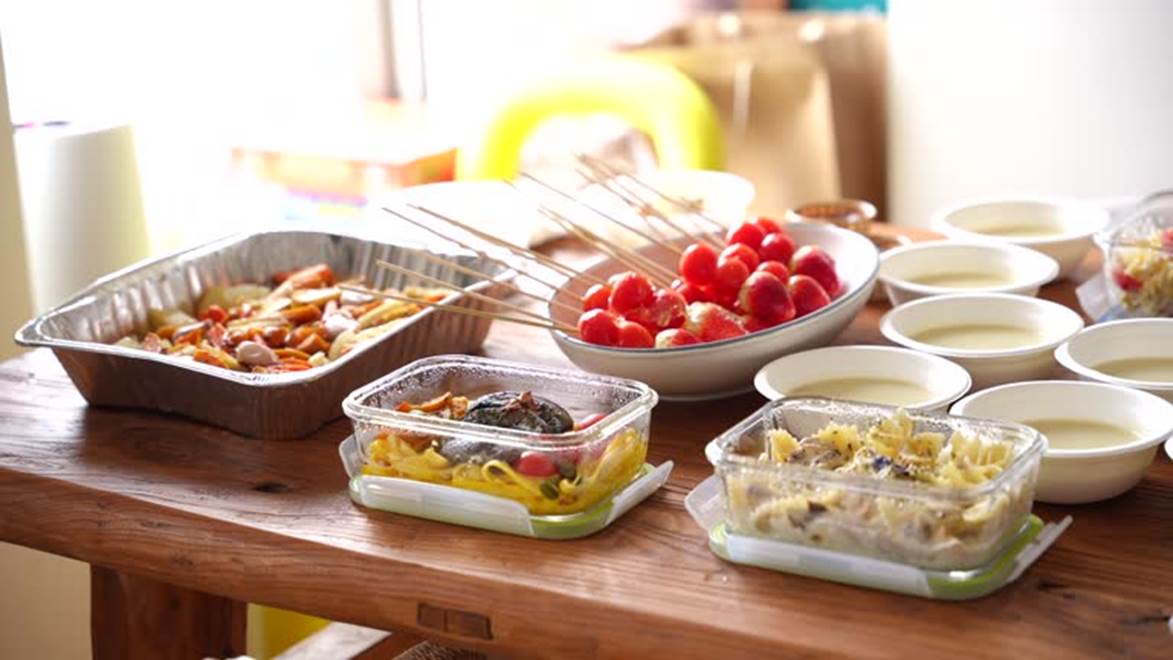The Ultimate Beginner’s Guide to Healthy Meal Prep
Meal prepping has become a cornerstone habit for anyone looking to live a healthier, more balanced lifestyle. From fitness enthusiasts to busy professionals, it’s one of the easiest and most effective ways to save time, eat better, and reduce stress around food choices. If you’re new to the concept, don’t worry—this beginner’s guide will walk you through the benefits of meal prepping and how to get started without feeling overwhelmed.

1. What is Meal Prepping and Why Should You Do It?
Meal prepping simply means preparing meals or ingredients ahead of time for the coming days. Whether you’re cooking full meals or chopping vegetables to save time later, it reduces daily decision fatigue, promotes healthier eating habits, and often saves money.
Benefits include:
- Healthier choices with portion control
- Reduced impulse eating or takeout spending
- Time saved on cooking each day
- Less food waste due to planned usage of ingredients
2. Start Small—Don’t Try to Prep the Entire Week
One of the biggest mistakes beginners make is trying to prep an entire week’s worth of meals right away. Start by prepping just one or two meals a day for three days. This helps you figure out your preferences, avoid waste, and gradually build a habit.
3. Choose Simple, Balanced Recipes
Focus on easy-to-cook, balanced meals that include:
- A lean protein (chicken, tofu, beans)
- Complex carbs (brown rice, sweet potatoes, quinoa)
- Healthy fats (avocado, olive oil, nuts)
- Plenty of vegetables (broccoli, spinach, bell peppers)
Mix and match these components to keep things interesting.
4. Make a Grocery List and Stick to It
Planning your meals in advance helps you create a focused shopping list. This saves time at the store and helps you avoid buying unnecessary (and often unhealthy) items. Shop for fresh produce, whole grains, and high-quality proteins.
5. Invest in Good Containers
Quality containers can make or break your meal prep game. Use BPA-free plastic or glass containers with tight lids. Get a mix of sizes to store entrees, snacks, and sauces separately. Stackable containers also save fridge space.
6. Batch Cook Smartly
Pick a day of the week—usually Sunday or Monday—to cook large batches of food. Use your oven and stovetop simultaneously to save time. For example, roast vegetables while boiling grains and sautéing proteins. Label and date everything to avoid confusion later.
7. Keep It Fresh—Use the Freezer Wisely
Not all meals stay fresh for a full week. Plan to eat fresh meals in the first 3–4 days and freeze meals for the latter half. Dishes like stews, curries, and baked casseroles freeze well and reheat easily.
8. Don’t Forget Snacks and Breakfasts
Meal prepping isn’t just for lunch or dinner. Prepare overnight oats, smoothie packs, hard-boiled eggs, and chopped fruits or nuts to keep your mornings stress-free. Having pre-prepared snacks helps avoid unhealthy cravings during the day.
9. Keep Variety in Mind
Eating the same thing daily can lead to burnout. Change up your herbs, spices, sauces, and proteins weekly. Use different cooking methods (grilling, roasting, steaming) to create different textures and flavors.
10. Stay Flexible and Don’t Stress
Meal prepping is a helpful tool, not a rigid rule. Life happens—you might eat out unexpectedly or skip a meal. That’s okay. The goal is to make healthier eating easier, not to pressure yourself into perfection.
Conclusion:
Meal prep isn’t just for fitness buffs or food bloggers—it’s for anyone who wants to simplify their life and take control of their health. With a little planning and consistency, you’ll not only save time and money but also feel more energized and focused throughout your week. Start small, stay consistent, and enjoy the benefits of eating well without the daily hassle.
